Lions: Facts, behavior and news
The uniquely-social lion is the world's second-largest cat
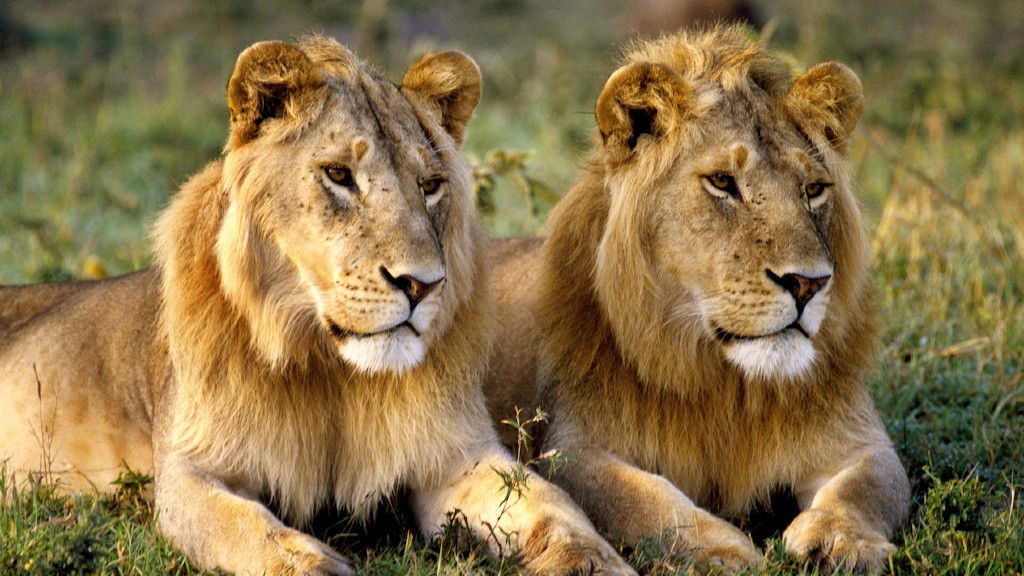
Lions are the second-largest cats in the world, after tigers. Known as the "king of beasts" or "king of the jungle," these regal felines once roamed Africa, Asia and Europe, but now only live in parts of Africa and India.
Experts have long recognized two subspecies of lion, Panthera leo leo (the African lion) and Panthera leo persica (the Asiatic lion). However, recent studies suggest that lions from West and Central Africa are more closely related to Asian lions than they are to lions from the eastern and southern parts of Africa, according to the Cat Specialist Group, a component of the International Union for Conservation of Nature (IUCN).
In 2017, the Cat Specialist Group published their reclassification of lions, grouping the cats into two new subspecies: Panthera leo leo (also called the Northern subspecies) and Panthera leo melanochaita (the Southern subspecies).
Panthera leo leo includes lion populations in Central Africa, West Africa (West African or Senegal lion) and India (Asiatic lion), according to the University of Kent, as well as extinct populations previously found in North Africa (Barbary lion), southeastern Europe, the Middle East, the Arabian peninsula and southwestern Asia. Panthera leo melanochaita includes lion populations from southern parts of Africa (Katanga lion and the Southeast African lion) and East Africa (Masai lion and Ethiopian lion).
Although the West African and Asiatic lions are genetically similar, many of their physical characteristics and behaviors are slightly different.
How big are lions?
African lions can grow to measure between 9 and 10 feet long (3 meters) from head to tail, with the tail being about 2 to 3 feet long (60 to 91 centimeters), according to the Smithsonian National Zoo. They typically weigh between 330 to 550 pounds (150 to 250 kilograms), with males reaching the higher end of that range.
Asiatic lions (also called Asian or Indian lions) are slightly smaller than African lions. They are 6.6 to 9.2 feet (2 to 2.8 m) long from head to tail and weigh between 242 to 418 pounds (110 to 190 kg), according to the World Wildlife Fund (WWF).
Lions tend to have loose skin hanging from their midsection, possibly to help protect them from the piercing hooves of their frantic prey. Asiatic lions also have a fold of skin that runs along their belly, a feature rarely seen in African lions, according to the African Lion and Environmental Research Trust (ALERT), a research and conservation organization. Compared with African lions, Asiatic lions tend to have shaggier coats, longer hair tufts on their elbows, and a longer tassel on the end of their tail.
Not only are male lions generally larger than females, but they also have a distinctive thick mane of hair around their heads that females lack. The biggest and most fabulous manes are more impressive to sexually mature females and more intimidating to competing males, according to the San Diego Zoo. The mane also protects the male's neck during fights over territory or mating access. African lions tend to have bigger, more magnificent manes compared to their Asiatic cousins.
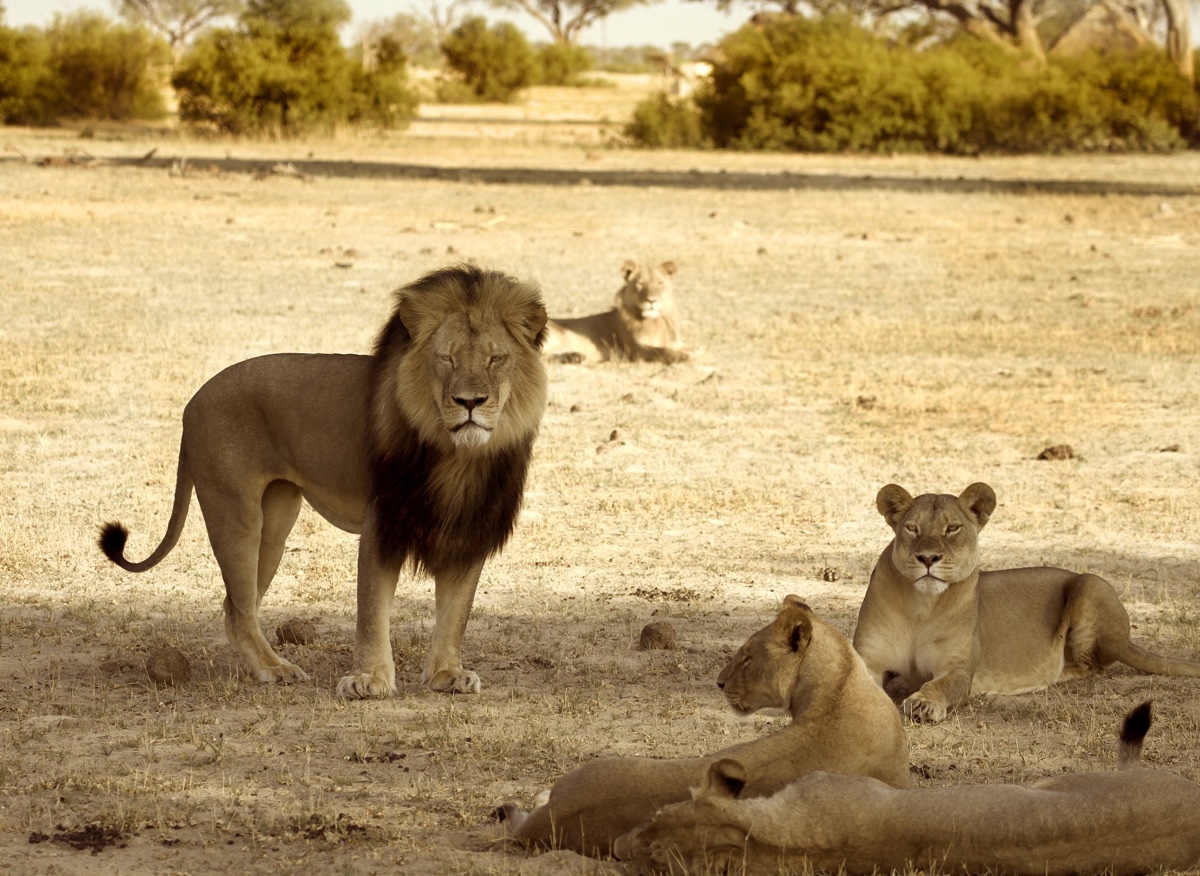
Where do lions live?
African lions live in Angola, Botswana, Mozambique, Tanzania, the Central African Republic, South Sudan and other parts of sub-Saharan Africa. Male lions defend the pride’s territory, which may include an area of up to 100 square miles (259 square kilometers) of shrubs, grasslands and open woodlands, according to the Cincinnati Zoo in Ohio.
Asiatic lions are found only in the Indian state of Gujarat in Western India, where most reside in the protected Sasan Gir National Park, a 545-square-mile (1,412-square-km) wildlife haven. The Indian government designated this land, which includes a deciduous forest, grasslands, scrub jungle and rocky hills, as a wildlife sanctuary in 1965, according to the park's website. In addition to more than 500 lions and 300 leopards, the park is home to deer, antelope, jackal, hyenas, foxes, reptiles and more than 200 species of birds.
Lion pride dynamics
Lions are social cats and live in groups called prides. Asiatic and African lion prides are very different, though.
African lion prides typically consist of up to three adult males and around a dozen females and their young, according to the Sedgwick County Zoo in Wichita, Kansas. Some prides can grow to be extremely large, however, with up to 40 members. Females tend to remain in the pride in which they are born, so they are usually related to each other. Males, on the other hand, wander off to create their own prides when they are old enough.
Asiatic male lions normally won't live with the females of their pride unless they’re mating or are sharing a large kill, according to the Zoological Society of London.
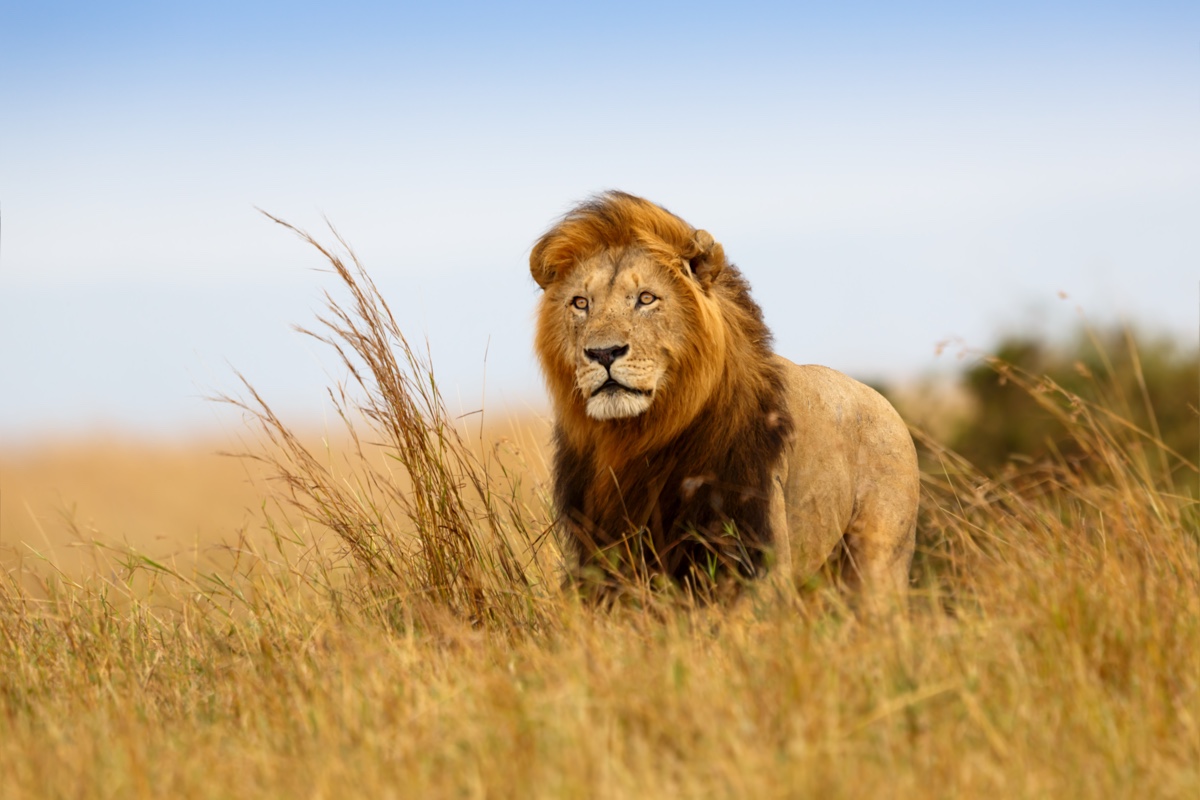
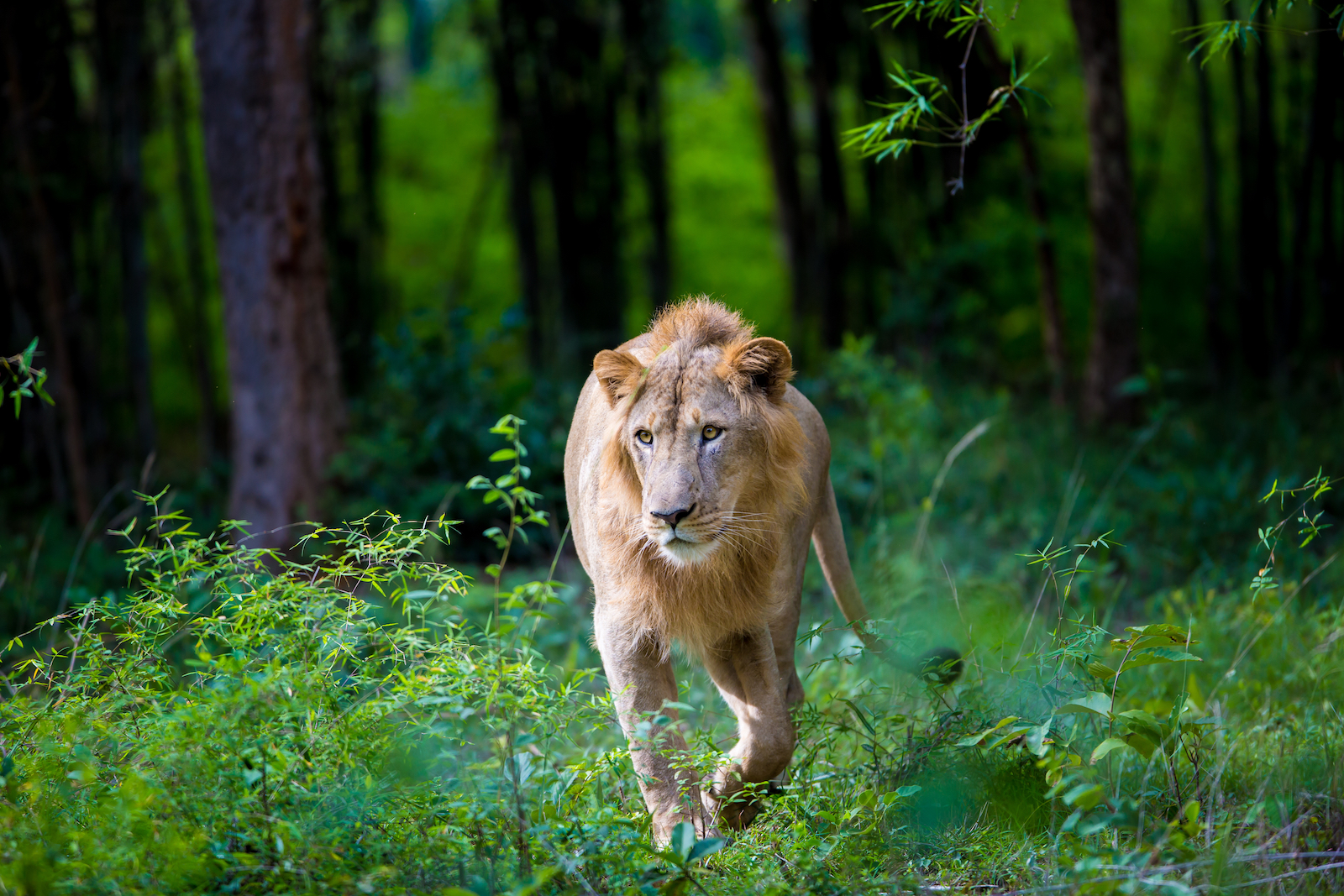
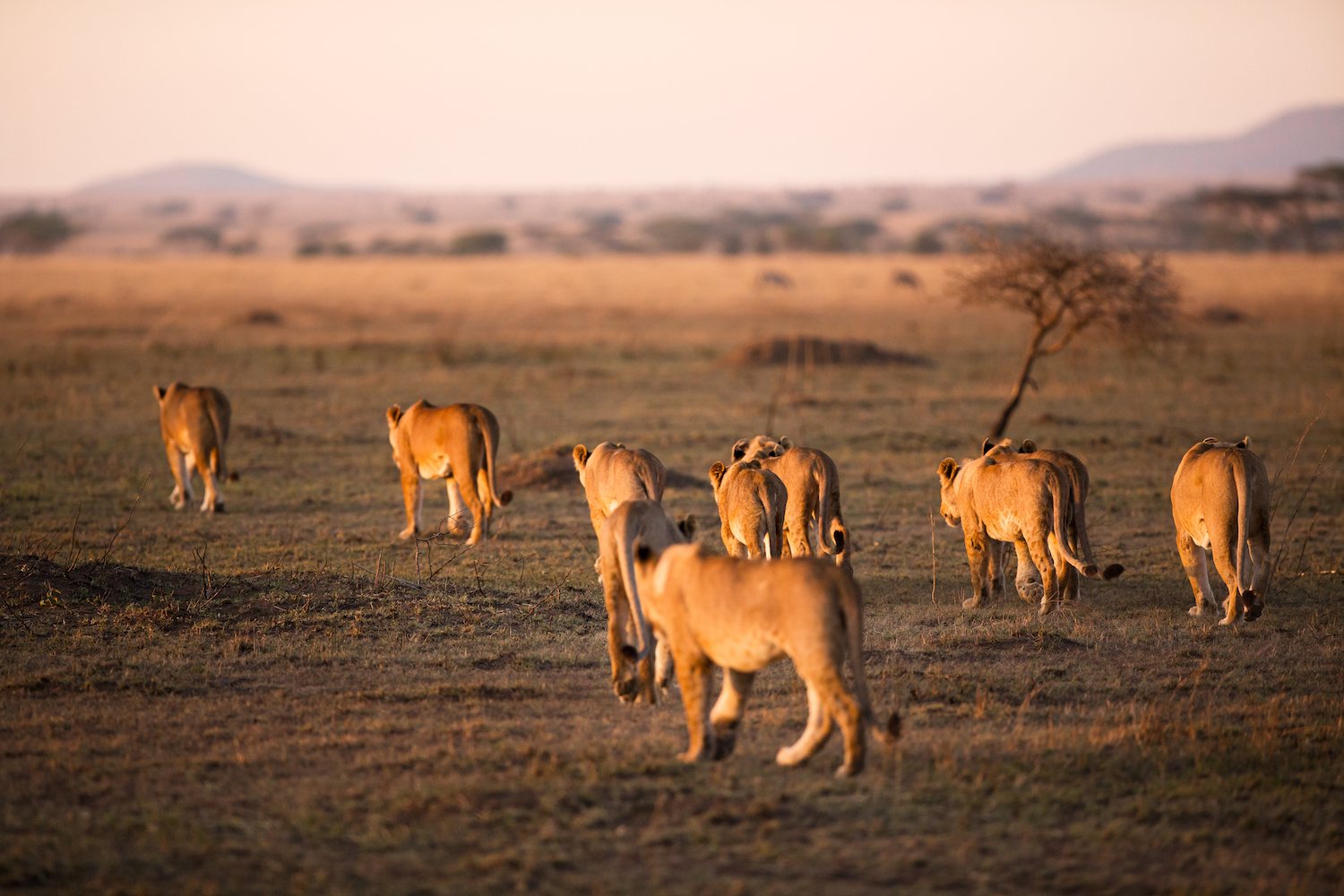
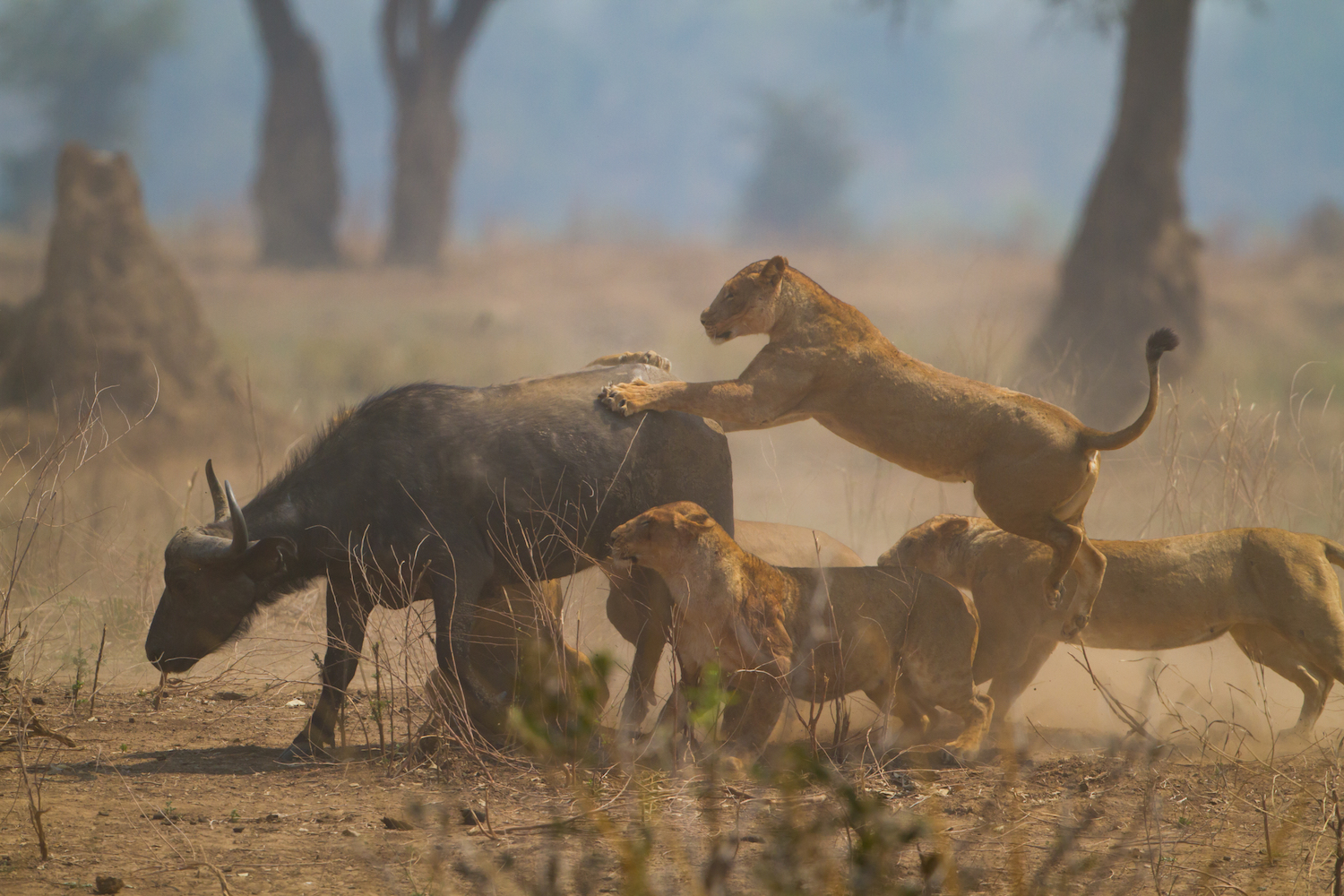
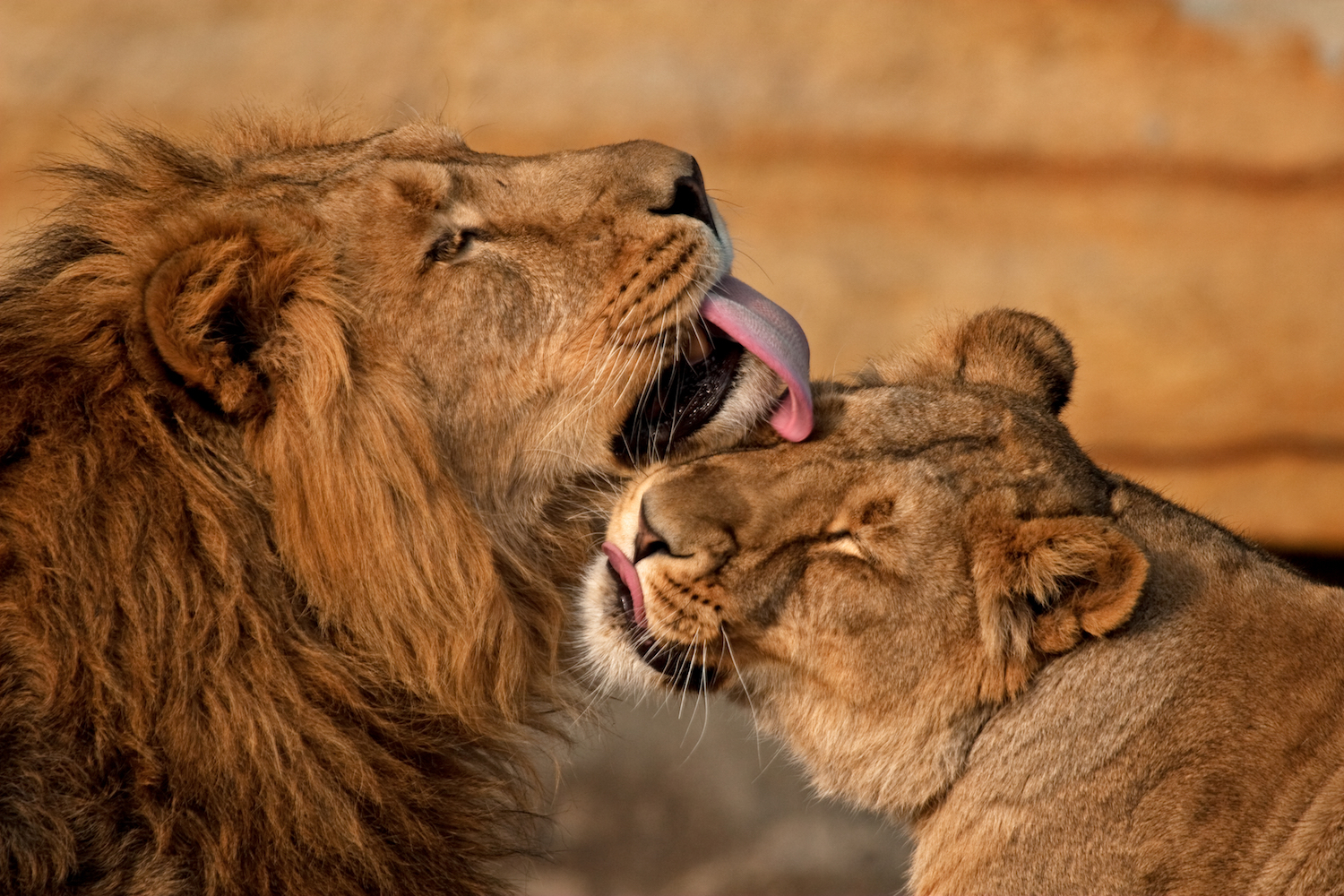
How do lions hunt?
African lions tend to hunt large animals such as antelopes, zebras, hogs, rhinos, hippos and wildebeest. Asiatic lions also hunt large animals, including buffaloes, goats, nilgai (a large Asian antelope), chital and sambar (two types of deer). Lions can kill animals that weigh up to 1,000 pounds (450 kg), according to the Smithsonian National Zoo, but they will also hunt smaller animals like mice and birds when opportunities arise.
Females are the main hunters of the pride, and work cooperatively in hunting parties to surround and take down prey. Lions can run up to 50 mph (80 km/h) for short distances and leap as far as 36 feet (11 m), almost the length of a school bus, according to the World Wildlife Fund. To bring down prey, lions jump on the backs of very large animals but will "ankle-tap" smaller animals, meaning they reach out a paw and swipe the preys' legs to trip them up, according to ALERT. To kill their prey, lions use their powerful jaws to snap the animal's neck or to strangle it to death.
Very occasionally, males will join in the hunting action, particularly if the prey is extremely large, like an elephant or water buffalo. Otherwise, the main job of the male is to protect the pride, while the female lions hunt in packs. African males who live alone are required to hunt by themselves, and tend to hide in dense vegetation to engage in ambush-style hunting, according to Smithsonian Magazine.
Lions typically hunt at night and often lurk around water holes, streams and rivers, as those areas are hotspots for prey. Lions will also scavenge, and won't hesitate to steal other predators' kills or eat the leftovers, according to ALERT.
Mating and raising young
Male lions reach sexual maturity when they are around 2 years old, according to a research article published in 2018 in the journal Zoo Biology. However, male lions are unlikely to breed before the age of 4 or 5 years, when they are large enough to attempt to take over a pride and assert their access to sexually mature females, according to ALERT.
Males as old as 16 years can still produce viable sperm but usually lose their mating rights once they can no longer fight off younger males. Male African lions that are trying to take over a pride will kill all of the cubs from other males to avoid competition.
Most female lions give birth by the time they are 4 years old. The gestation period for lions is around four months. Females will give birth to their young away from others, and will hide the cubs for the first six weeks of their lives. At birth, the cubs only weigh around 2 to 4 pounds. (0.9 to 1.8 kg), according to ALERT , and they're completely dependent on their mother.
All of the females in a pride will mate at around the same time. After the first six weeks of rearing cubs alone, the mothers and cubs will rejoin the pride. Other females in the pride will contribute to raising all of their pride's young, and will even nurse other mothers' cubs, according to the San Diego Zoo.
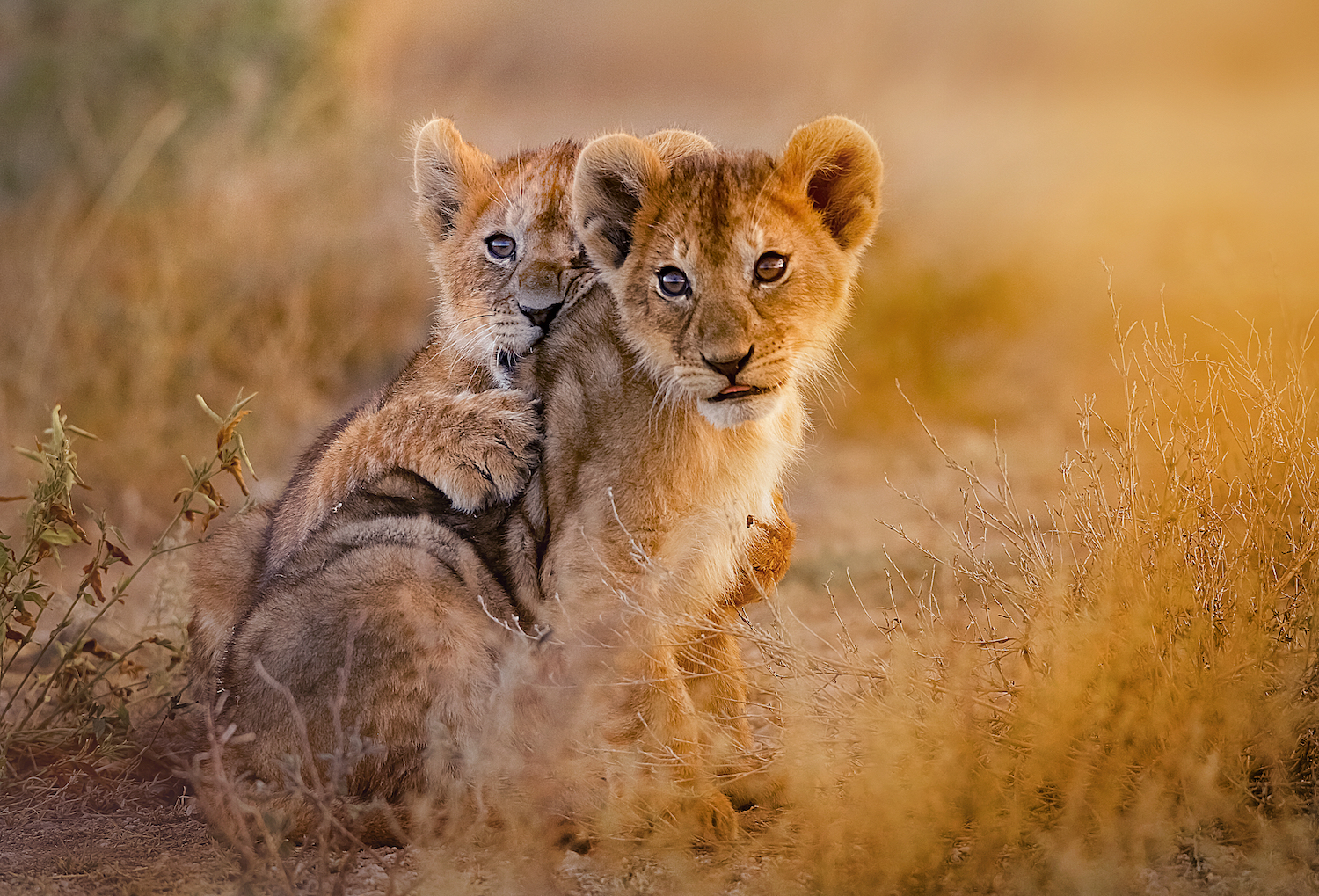
Conservation status
Lions are listed as vulnerable by the IUCN's Red List of Threatened Species. About 75% of African lion populations are in decline; their current global population is estimated at 20,000 in the wild, according to the World Wildlife Fund (WWF). The population has been reduced by nearly 50% over the past two decades because of retaliatory killings by farmers whose livestock were eaten by lions, as well as from trophy hunting and habitat loss.
News about lions
Research published in Nov. 2021 in the journal Molecular Ecology found that lions' ancestors inhabited North America by crossing the Bering Land Bridge, which once linked North America and northeast Asia, in multiple waves, alongside brown bears.
In March 2022, scientists who studied the movement patterns of lions over diverse landscapes, discovered that the big cats' hunting behaviors varied significantly due to changes in vulnerability and distribution of the lions' prey.
The research, which was published in the Journal of Mammalogy, studied three lion prides in Kruger National Park in South Africa, evaluating their hunting behavior around large herbivores.
According to the study authors, lions left their home ranges to hunt on 13% of the nights when they were observed. Their results indicated that the lions left their home ranges as often as every second night to visit areas with shorter grass, where wildebeests grazed.
Additional resources
To learn more about how wild lions can be protected, and the struggle to conserve lions, visit the Defenders of Wildlife website. Additionally, you can observe the hunting skills of a lioness in this clip from BBC Earth.
Originally published on Live Science.
Sign up for the Live Science daily newsletter now
Get the world’s most fascinating discoveries delivered straight to your inbox.

- Ailsa HarveyContributor










